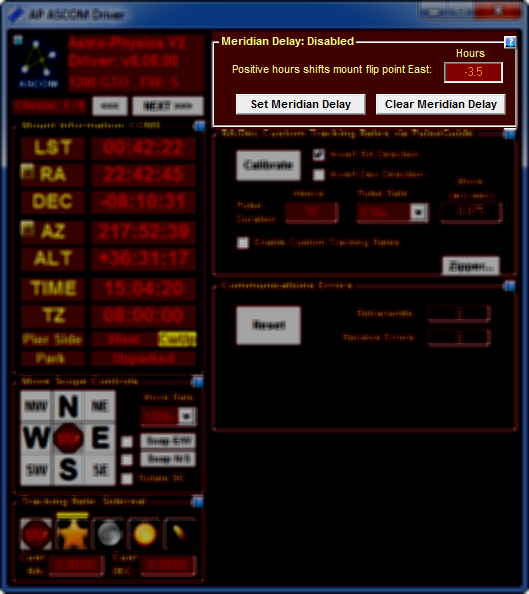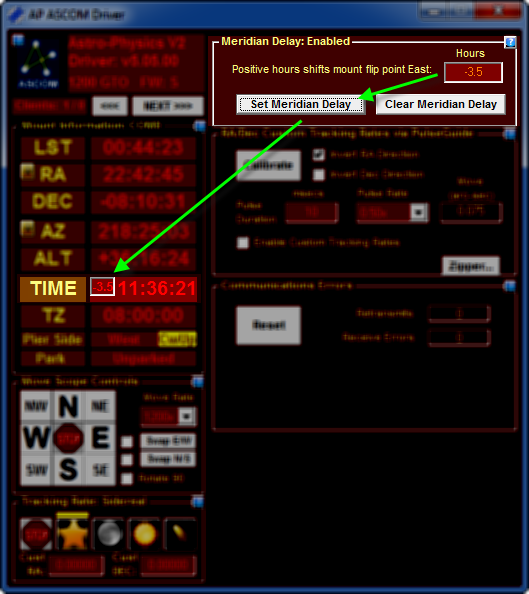Meridian Delay
The driver supports a simulated meridian delay feature by adding an offset to the mount’s time. For example, if the time is really 10PM and you press Set Meridian Delay with a meridian delay of -1 hours then the driver will set the time to 9PM even though it is really 10PM. The time change affects which side of the mount will put the scope on when a slew is issued. If you specify meridian offset = 0 and you issue a GOTO to a star that is east of the meridian then the mount will place the scope on the west side of the mount. A GOTO to a star west of the meridian will place the scope on the east side of the mount. A positive Meridian Delay will simulate all objects being farther west than they really are. This will cause the mount to flip the scope to the east side of the mount (on a GOTO command) before the object reaches the meridian. This allows you to track an object across the meridian until well after the meridian without risk of the scope hitting the pier. IMPORTANT: Make sure you turn off the Meridian delay or Park the mount before powering down the mount or the next time it is initialized it will be offset by the Meridian delay offset. The Meridian delay is automatically turned off when parking the mount manually from the driver's hand box or if a client application issues an ASCOM Park() function call. |
Set Meridian Delay: Clicking this button will set the meridian delay. You can tell the Meridian delay is active by the tiny text box inside the Time text box as shown to the right. Clear Meridian Delay: Clicking this button immediately restores the mount's time. The Meridian delay is also automatically cleared if you park the telescope. Second important note: When operating with a non-zero meridian delay, the altitude and azimuth values reported by the mount (and therefore displayed in the driver's handbox window) will not be correct. Ignore these values while meridian delay is in effect. |


